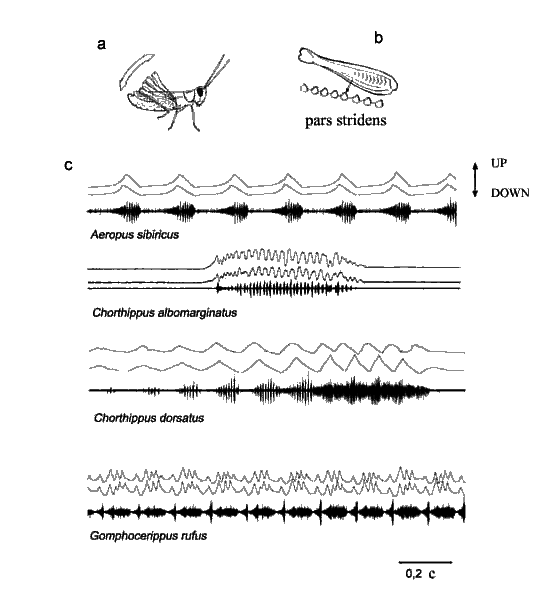

Fig. 3. Scheme of the singing grasshopper (à); stridulatory file (pars stridens) situated on the inside of the hind femur of Gomphocerinae (b); calling songs of four species of Gomphocerinae (c).
For each species, two upper traces - recordings of the leg movements, lower trace - sound recording. When the legs are moved in antiphase, the frequency of pulses is doubled (Chorthippus albomarginatus). When the legs are moved with a very slight phase shift in the beginning of a signal, and after that start moving in antiphase, the distinct pulses disappear, which results in a noise with an amplitude modulation (Chorthippus dorsatus). The frequency spectra are shown in figure 2.
Place and date of collected material: Aeropus sibiricus - Italy, Abruzzo, Gran Sasso, Prati di Tivo, 2212 m N.N., 21.08.2002. Chorthippus albomarginatus - Germany, Bavaria, Erlangen, 20.07.1999. Chorthippus dorsatus - Italy, Calabria, Lago Arvo, 1320 m N.N., 16.08.2002. Gomphocerippus rufus - Italy, Abruzzo, Parco della Maiella, 968 m N.N., 20.08.2002. Recordings were made at temperature 30-32î Ñ.